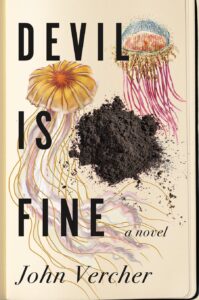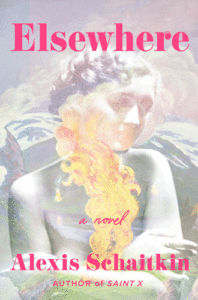Often considered a subgenre of speculative fiction, magical realism is a unique storytelling mode that blurs the lines between the real and the mystical, frequently to critique historical and systemic imbalances of power. While its roots trace back to Latin American and Caribbean storytelling, authors around the globe have adopted magical realism techniques to tell their own culturally specific stories.
If you’re curious about this wondrous literary style, you’ve come to the right place. Join us as we explore magical realism, tracing its history and influence across the globe and highlighting a few of our favorite fantastical reads — from influential classics to otherworldly new works.
Defining “Magical Realism”
Magical realism refers to a literary movement that began to blossom among Latin American writers in the 1950s. Authors would set their stories in recognizable worlds with an undercurrent of magic or fantasy. The magic in these narratives went unexplained or unremarked upon, and the plots often moved freely across time and space. The style grew in popularity in Latin American regions colonized or exploited by the West where writers sought out ways to critique the harsh realities of Western imperialism through storytelling. Perhaps the best-known example of magical realism is One Hundred Years of Solitude by Colombian author Gabriel García Márquez, which traces the rise and fall of a mythical town called Macondo and the multigenerational saga of the Buendía family.
Often referred to as a “literary mode” rather than a true genre, magical realism explores the push–pull interplay of the extraordinary and rational by erasing clear lines that separate life and death (real and imagined), technology and nature, and the past and future. What differentiates magical realism from speculative fiction? Its settings are grounded in a recognizable version of our world, albeit one in which fantastical elements exist and are taken for granted. Further, magical realism’s blurring of these distinctions is often done to critique or reject Western assumptions about rationalism, science, and nature. Unlike other more fantastical modes of speculative fiction, magical realism doesn’t attempt to imagine wholly new worlds — it tries to capture the wonder and truth of living in our own more vividly.
Literary works of magical realism tend to share a few distinct characteristics. First, the stories are set in a recognizable world with specific magical elements that go unaddressed by the author and are treated as normal by the characters. Crucially, the magical elements of the stories aren’t just for entertainment or aesthetic purposes, they facilitate political critique. Finally, the narratives tend to avoid typical literary arcs or act structure, instead playing around with plot pacing, rising conflict, the flow of time, and even closure. Themes often include fear of oppression and distrust of authority, repetition and the cyclical nature of time, and the celebration of the body, senses, and sensuality.
A contemporary example of magical realism in the U.S. context can be found in John Vercher’s latest novel, Devil Is Fine. While the book is very much grounded in a realistic portrayal of family and grief, Vercher draws on supernatural elements to create a connection between the main character’s experience of family and loss with a critique of the United States’s history of slavery and racist oppression. Devil Is Fine trades on magical realism’s characteristics by contorting the distinction between life and death, past and present, and white and Black in its story of a biracial man’s reckoning with his white family’s racist past, his own identity, and the recent loss of his son.
The Historical Roots of Magical Realism
The term “magical realism” was popularized by literary critic Angel Flores, who argued that Argentine author Jorge Luis Borges was the first to fully write in the literary mode in his short story collection Historia Universal de la Infamia (A Universal History of Infamy). The use of the term can be traced back even farther to German art critic Granz Roh and his writing from 1925. He used “magischer realismus” (magic realism) to describe the emerging New Objectivity art movement, which combined expressionism with realism. A key European literary work from the early 20th century that helped set the stage for the Latin American magical realism explosion is Franz Kafka’s Metamorphosis (1915), about a man who awakes to find that he’s turned into a cockroach. Latin American authors eventually took this nascent style and made it fully their own, creating a unique mode through which to critique Western imperialism while celebrating their indigenous folklore, traditions, and cultures.
The popularity of Latin American magical realism was driven by the confluence of two events: the so-called “Boom Period” between 1962 and 1967 when Latin American literature exploded in popularity across the globe, and the deepening political turmoil in Latin America during the Cold War. After the Cuban Revolution of 1959, many Latin American writers drew on magical realism to argue for fuller autonomy and independence from the creeping strictures of Western values on their culture.
Writers like Cuba’s Alejo Carpentier and Colombia’s Gabriel García Márquez have contended that magical realism is uniquely Indigenous and grounded in the lived experience of colonized populations. Even international authors who draw on the techniques of magical realism often do so to critique dominant power structures in their own geographically specific ways.
Magical Realism Book Suggestions
If you’re looking to delve into magical realism, here are a few contemporary works and influential narratives from the literary movement.











